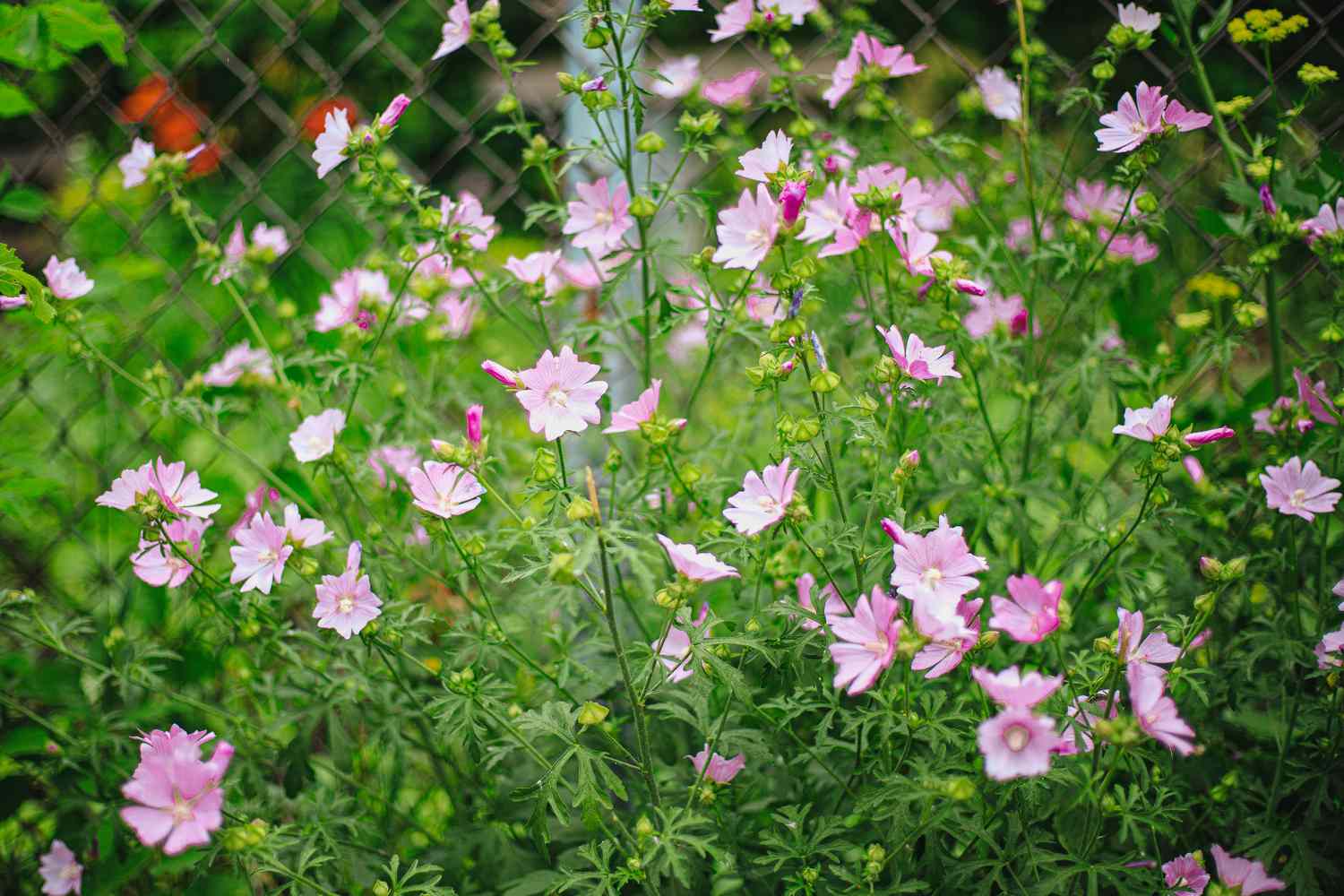
Lavatera, also known as tree mallows, are fascinating plants that are sure to captivate any gardening enthusiast. With their stunning flowers and impressive growth habits, they are a popular choice for both ornamental and practical purposes. In this article, we will delve into the world of lavatera and explore 13 astonishing facts that will leave you in awe of these remarkable plants.From their vibrant blooms to their medicinal uses, lavatera has a rich history and a wide range of interesting characteristics. Whether you are a seasoned gardener looking to expand your knowledge or simply someone who appreciates the beauty of nature, you will be amazed by the versatility and uniqueness of lavatera. So, prepare to be inspired as we uncover the secrets of this marvelous plant genus.
Key Takeaways:
- Lavatera, also known as mallow, is a stunning flowering plant with colorful blooms that attract bees and butterflies, making it a beautiful addition to any garden.
- Lavatera is low-maintenance, versatile, and has symbolic meanings in different cultures, making it a magical and enchanting plant to grow in your garden.
Lavatera, also known as mallow, is a beautiful flowering plant.
Lavatera is a genus of about 25 species of annuals, perennials, and subshrubs. These plants are known for their large, showy flowers and are a popular choice in gardens and landscapes.
The name Lavatera is derived from the Swiss physician and botanist Caspar Lavater.
Caspar Lavater was a prominent figure in the field of botany during the 18th century. His contributions to the study of plants and classification systems led to the naming of this genus in his honor.
Lavatera plants come in a variety of colors.
From shades of pink, purple, and white to vibrant hues of red and orange, Lavatera flowers can add a splash of color to any garden. Their attractive blooms make them a favorite among garden enthusiasts.
Lavatera is native to the Mediterranean region.
These plants thrive in warm climates and are commonly found in Mediterranean countries such as Spain, Portugal, and Italy. However, they have also been successfully cultivated in other parts of the world.
Lavatera is a member of the mallow family, Malvaceae.
Mallow plants are known for their distinctive cup-shaped flowers and often have a long flowering season. Lavatera shares this characteristic and can bloom from late spring to early fall.
Lavatera flowers attract bees and butterflies.
The nectar-rich flowers of Lavatera are a magnet for pollinators. Bees and butterflies are frequent visitors, helping to spread pollen and ensuring the plants’ continued reproduction.
Lavatera can be grown from seeds or cuttings.
Whether you prefer starting from scratch with seeds or taking cuttings from an existing plant, Lavatera is relatively easy to propagate. With proper care, you can enjoy a bountiful display of these beautiful flowers.
Lavatera plants are relatively low-maintenance.
Once established, Lavatera plants require minimal care. They are tolerant of various soil types and can withstand periods of drought. Regular watering and occasional pruning will help keep these plants healthy and thriving.
Lavatera is often used for medicinal purposes.
Throughout history, Lavatera has been utilized for its medicinal properties. Various parts of the plant, including the leaves and flowers, have been used to treat ailments such as respiratory issues and digestive problems.
The foliage of Lavatera plants is attractive even when not in bloom.
Even when the flowers are not in full bloom, Lavatera plants still offer visual interest with their attractive foliage. The leaves are often heart-shaped and can add texture and color to garden beds.
Lavatera plants can reach impressive heights.
Depending on the species, Lavatera plants can grow to heights of up to six feet or more. Their towering presence adds vertical interest to gardens and can serve as a focal point in landscaping design.
Lavatera makes a stunning cut flower.
With their large and captivating blooms, Lavatera flowers are perfect for creating beautiful floral arrangements. Their vibrant colors and long vase life make them a popular choice for bouquets and displays.
Lavatera has symbolic meanings in different cultures.
In some cultures, Lavatera is associated with love, beauty, and fertility. It has been used in ceremonies and celebrations, symbolizing joy, abundance, and new beginnings.
As you can see, Lavatera is a versatile and enchanting plant that has captured the hearts of many gardeners and enthusiasts. Whether for its stunning flowers, medicinal properties, or symbolic meanings, Lavatera continues to be celebrated for its beauty and allure. So why not consider adding this remarkable plant to your own garden and experience the magic of Lavatera firsthand?
Conclusion
In conclusion, Lavatera is a fascinating plant with a variety of astonishing facts. From its vibrant flowers to its versatility in different climates, Lavatera is a wonderful addition to any garden or landscape. Its ability to attract pollinators and its medicinal properties make it even more valuable. Whether you’re a gardening enthusiast or simply appreciate the beauty of nature, exploring Lavatera and its incredible features will surely leave you in awe. So, next time you encounter Lavatera, take a moment to appreciate its remarkable qualities and the wonders it brings to the world of plants.
FAQs
1. What is Lavatera?
Lavatera is a genus of flowering plants that belong to the family Malvaceae. It is known for its vibrant flowers and attractive foliage.
2. Where can Lavatera be grown?
Lavatera can be grown in various regions with temperate and mild climates. It thrives in well-draining soil and requires full or partial sunlight.
3. How tall can Lavatera plants grow?
Depending on the species and variety, Lavatera plants can range in height from one to six feet.
4. Are Lavatera plants easy to care for?
Generally, Lavatera plants are low-maintenance and easy to care for. They require regular watering and occasional pruning to maintain their shape and promote blooming.
5. Can Lavatera be grown in containers?
Yes, Lavatera can be grown in containers as long as there is enough space for the roots to grow and the container has good drainage.
6. Are Lavatera flowers edible?
Yes, Lavatera flowers are edible. They can be used as a decorative addition to salads, desserts, or drinks.
7. Do Lavatera plants attract pollinators?
Yes, Lavatera plants are known to attract bees, butterflies, and hummingbirds, making them beneficial for pollination in the garden.
8. Can Lavatera be propagated from seeds or cuttings?
Yes, Lavatera can be propagated from both seeds and cuttings. Seeds can be sown directly in the soil, while cuttings can be taken from mature plants and rooted in a suitable medium.
Lavatera's captivating beauty and diverse uses make this flowering plant truly remarkable. From its vibrant colors to medicinal properties, Lavatera continues to amaze plant enthusiasts and gardeners alike. If you found these facts about Lavatera intriguing, you might also be interested in exploring even more surprising aspects of this fascinating plant. Delve deeper into the world of Lavatera and uncover additional astonishing facts that will leave you in awe of nature's incredible creations.
Was this page helpful?
Our commitment to delivering trustworthy and engaging content is at the heart of what we do. Each fact on our site is contributed by real users like you, bringing a wealth of diverse insights and information. To ensure the highest standards of accuracy and reliability, our dedicated editors meticulously review each submission. This process guarantees that the facts we share are not only fascinating but also credible. Trust in our commitment to quality and authenticity as you explore and learn with us.


